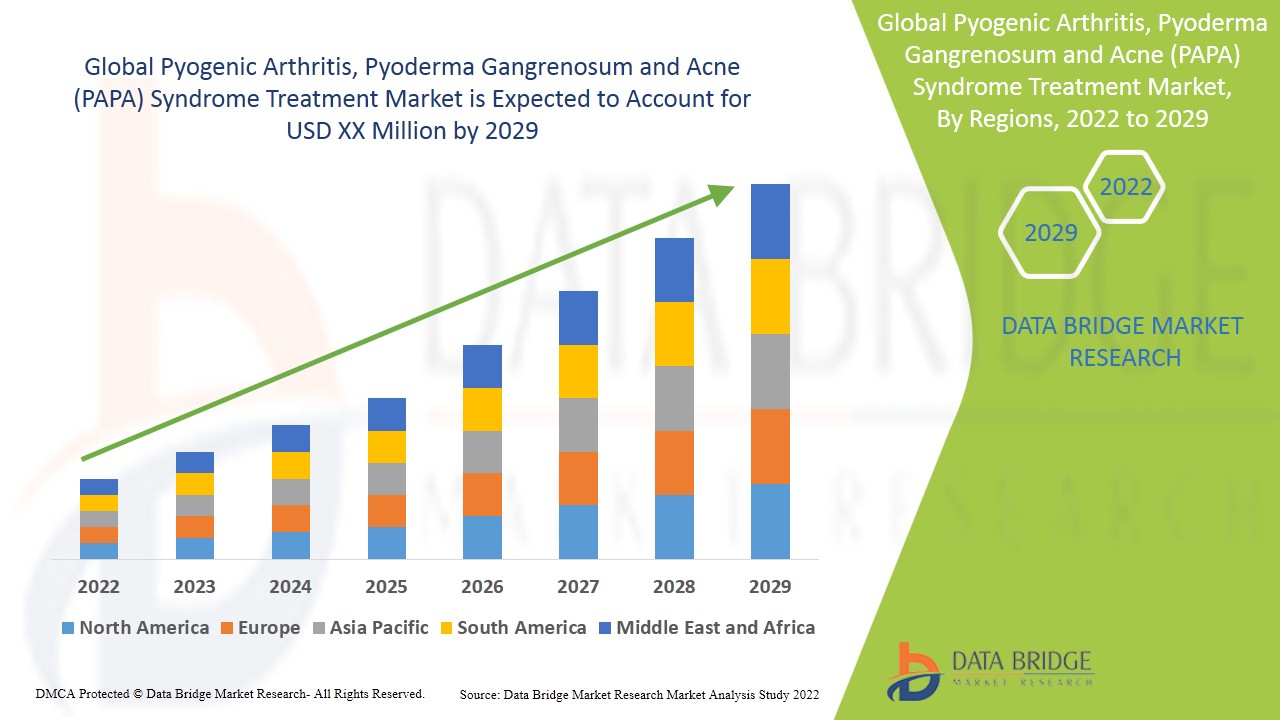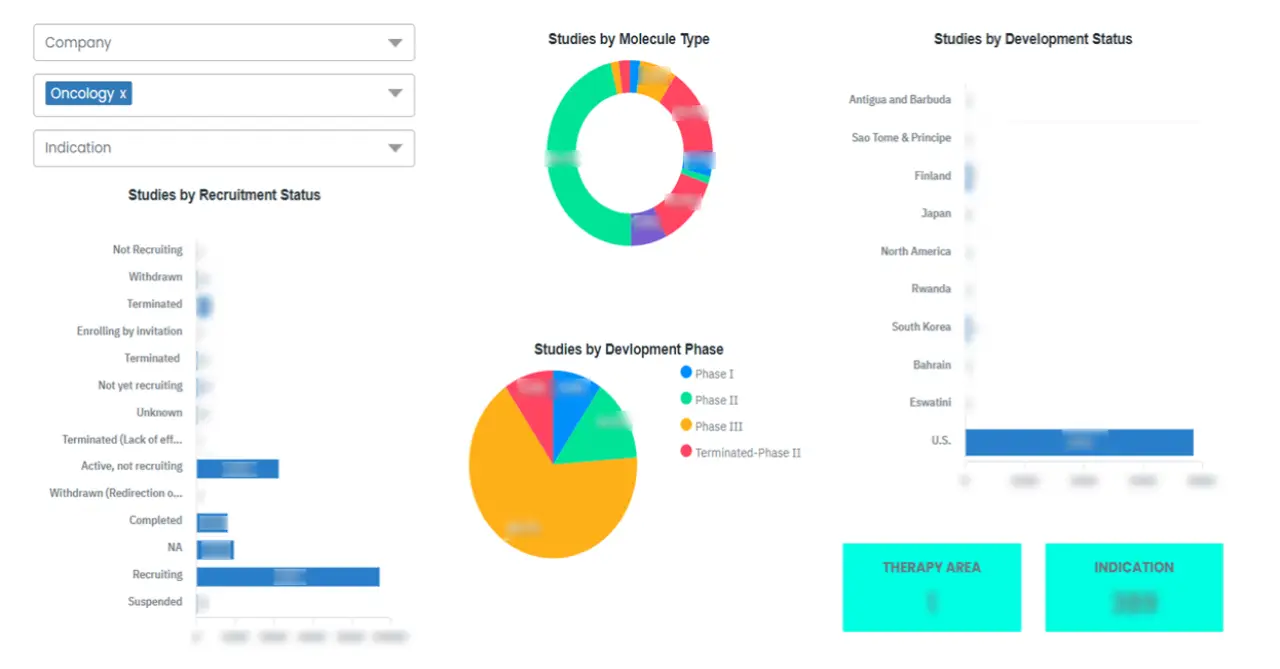Global Pyogenic Arthritis, Pyoderma Gangrenosum and Acne (PAPA) Syndrome Treatment Market, By Treatment (Tetracycline Antibiotics, Tumour Necrosis Factor (TNF) Inhibitor, Interleukin (IL)-1 Receptor Antagonist, Genetic Counseling, Others), Diagnosis (Skin Biopsy, Genetic Testing, Others), Symptoms (Pain, Pyoderma Gangrenosum, Arthritis, Cystic Acne, Others), Dosage (Injection, Tablets, Ointment, Others), Route of Administration (Oral, Parenteral, Topical, Others), End-Users (Clinic, Hospital, Others), Distribution Channel (Hospital Pharmacy, Retail Pharmacy, Online Pharmacy), Country (U.S., Canada, Mexico, Brazil, Argentina, Peru, Rest of South America, Germany, France, U.K., Netherlands, Switzerland, Belgium, Russia, Italy, Spain, Turkey, Hungary, Lithuania, Austria, Ireland, Norway, Poland, Rest of Europe, China, Japan, India, South Korea, Singapore, Malaysia, Australia, Thailand, Indonesia, Philippines, Vietnam, Rest of Asia-Pacific, Saudi Arabia, U.A.E, Egypt, Israel, Kuwait, South Africa, Rest of Middle East and Africa) Industry Trends and Forecast to 2029.
Market Analysis and Insights Global Pyogenic Arthritis, Pyoderma Gangrenosum and Acne (PAPA) Syndrome Treatment Market
Pyogenic arthritis, pyoderma gangrenosum and acne (PAPA) syndrome treatment market is expected to gain market growth in the forecast period of 2022-2029. Data Bridge Market Research analyses the market to account to grow at a CAGR of 4.70% in the above mentioned forecast period.
PAPA syndrome is an abbreviation for pyogenic arthritis, pyoderma gangrenosum, and acne. It's an uncommon inherited auto inflammatory condition with skin and joint manifestations. PAPGA syndrome is another name for this syndrome. It is inherited in an autosomal dominant manner, meaning that a child has a 50% chance of inheriting the condition from an affected parent. It usually starts with arthritis at a young age, and the skin changes become more apparent around adolescence. The proline-serine-threonine phosphatase interacting protein 1 (PSTPIP1) gene (formerly known as the CD2 binding protein 1 (CD2BP1) gene) is responsible for the condition. Two mutations have been discovered in the CD2 binding protein 1 protein (CD2BP1). Arthritis, cystic acne and pyoderma gangrenosum are the most prevalent indications of the condition.
The rise in the number of patients suffering from pyogenic arthritis and acne will act as major driver that will results in the expansion of market’s growth. Another significant factor influencing the growth rate of pyogenic arthritis, pyoderma gangrenosum and acne (PAPA) syndrome treatment market is the rising healthcare expenditure. Furthermore, advancement in the medical technology, rising initiatives by public and private organisations to spread awareness about rare diseases and growing government funding are the factors that will expand the pyogenic arthritis, pyoderma gangrenosum and acne (PAPA) syndrome treatment market. Other factors such as increasing adoption of early genetic counseling and rising patient pool will positively impact the pyogenic arthritis, pyoderma gangrenosum and acne (PAPA) syndrome treatment market’s growth rate. Additionally, changing lifestyle and growing incidences of pyoderma gangrenosum will result in the expansion of pyogenic arthritis, pyoderma gangrenosum and acne (PAPA) syndrome treatment market.
Moreover, the rise in the research and development activities and launch of effective therapies will provide beneficial opportunities for the pyogenic arthritis, pyoderma gangrenosum and acne (PAPA) syndrome treatment market in the forecast period of 2022-2029. Also, high unmet need of current treatment and developments in healthcare technology will escalate the growth rate pyogenic arthritis, pyoderma gangrenosum and acne (PAPA) syndrome treatment market in future.
However, high cost associated with the treatment and lack of infrastructure in low-income countries will impede the growth rate of pyogenic arthritis, pyoderma gangrenosum and acne (PAPA) syndrome treatment market. Additionally, complications involved with pyogenic arthritis, pyoderma gangrenosum and acne (PAPA) syndrome treatment will hinder the market’s growth rate. Less awareness will further challenge the market in the forecast period mentioned above.
This pyogenic arthritis, pyoderma gangrenosum and acne (PAPA) syndrome treatment market report provides details of new recent developments, trade regulations, import export analysis, production analysis, value chain optimization, market share, impact of domestic and localized market players, analyses opportunities in terms of emerging revenue pockets, changes in market regulations, strategic market growth analysis, market size, category market growths, application niches and dominance, product approvals, product launches, geographic expansions, technological innovations in the market. To gain more info on the pyogenic arthritis, pyoderma gangrenosum and acne (PAPA) syndrome treatment market contact Data Bridge Market Research for an Analyst Brief, our team will help you take an informed market decision to achieve market growth.
Global Pyogenic Arthritis, Pyoderma Gangrenosum and Acne (PAPA) Syndrome Treatment Market Scope and Market Size
The pyogenic arthritis, pyoderma gangrenosum and acne (PAPA) syndrome treatment market is segmented on the basis of treatment, diagnosis, symptoms, dosage, route of administration, end-users and distribution channel. The growth amongst these segments will help you analyze meager growth segments in the industries, and provide the users with valuable market overview and market insights to help them in making strategic decisions for identification of core market applications.
- On the basis of treatment, the pyogenic arthritis, pyoderma gangrenosum and acne (PAPA) syndrome treatment market is segmented into tetracycline antibiotics, tumour necrosis factor (TNF) inhibitor, interleukin (IL)-1 receptor antagonist, genetic counseling and others. The tumour necrosis factor (TNF) inhibitor segment is further sub-segmented into infliximab, etanercept, and adalimumab.
- On the basis of diagnosis, the pyogenic arthritis, pyoderma gangrenosum and acne (PAPA) syndrome treatment market is segmented into skin biopsy, genetic testing and others.
- On the basis of symptoms, the pyogenic arthritis, pyoderma gangrenosum and acne (PAPA) syndrome treatment market is segmented pain, pyoderma gangrenosum, arthritis, cystic acne, and others.
- On the basis of dosage, the pyogenic arthritis, pyoderma gangrenosum and acne (PAPA) syndrome treatment market is segmented into injection, tablets, ointments and others.
- On the basis of route of administration, the pyogenic arthritis, pyoderma gangrenosum and acne (PAPA) syndrome treatment market is segmented into oral, parenteral, topical and others.
- On the basis of end-users, the pyogenic arthritis, pyoderma gangrenosum and acne (PAPA) syndrome treatment market is segmented into clinic, hospital and others.
The pyogenic arthritis, pyoderma gangrenosum and acne (PAPA) syndrome treatment market is also segmented on the basis of distribution channel into hospital pharmacy, retail pharmacy and online pharmacy.
Pyogenic Arthritis, Pyoderma Gangrenosum and Acne (PAPA) Syndrome Treatment Market Country Level Analysis
The pyogenic arthritis, pyoderma gangrenosum and acne (PAPA) syndrome treatment market is segmented on the basis of treatment, diagnosis, symptoms, dosage, route of administration, end-users and distribution channel.
The countries covered in the pyogenic arthritis, pyoderma gangrenosum and acne (PAPA) syndrome treatment market report are the U.S., Canada, Mexico, Brazil, Argentina, Peru, Rest of South America, Germany, France, U.K., Netherlands, Switzerland, Belgium, Russia, Italy, Spain, Turkey, Hungary, Lithuania, Austria, Ireland, Norway, Poland, Rest of Europe, China, Japan, India, South Korea, Singapore, Malaysia, Australia, Thailand, Indonesia, Philippines, Vietnam, Rest of Asia-Pacific, Saudi Arabia, U.A.E, Egypt, Israel, Kuwait, South Africa, Rest of Middle East and Africa.
North America dominates the pyogenic arthritis, pyoderma gangrenosum and acne (PAPA) syndrome treatment market due to the presence of major key players, high disposable income and well-developed healthcare infrastructure in this region. Asia-Pacific is expected to grow during the forecast period of 2022-2029 due to the increasing patient pool, rising investment in the healthcare sector, and growing government support.
The country section of the report also provides individual market impacting factors and changes in regulations in the market domestically that impacts the current and future trends of the market. Data points such as new sales, replacement sales, country demographics, disease epidemiology and import-export tariffs are some of the major pointers used to forecast the market scenario for individual countries. Also, presence and availability of global brands and their challenges faced due to large or scarce competition from local and domestic brands, impact of sales channels are considered while providing forecast analysis of the country data.
Patient Epidemiology Analysis
Pyogenic arthritis, pyoderma gangrenosum and acne (PAPA) syndrome treatment market also provides you with detailed market analysis for patient analysis, prognosis and cures. Prevalence, incidence, mortality, adherence rates are some of the data variables that are available in the report. Direct or indirect impact analysis of epidemiology to market growth are analysed to create a more robust and cohort multivariate statistical model for forecasting the market in the growth period.
Competitive Landscape and Global Pyogenic Arthritis, Pyoderma Gangrenosum and Acne (PAPA) Syndrome Treatment Market Share Analysis
Pyogenic arthritis, pyoderma gangrenosum and acne (PAPA) syndrome treatment market competitive landscape provides details by competitor. Details included are company overview, company financials, revenue generated, market potential, investment in research and development, new market initiatives, global presence, production sites and facilities, company strengths and weaknesses, product launch, clinical trials pipelines, product approvals, patents, product width and breadth, application dominance, technology lifeline curve. The above data points provided are only related to the companies’ focus related to pyogenic arthritis, pyoderma gangrenosum and acne (PAPA) syndrome treatment market research.
Some of the major players operating in the pyogenic arthritis, pyoderma gangrenosum and acne (PAPA) syndrome treatment market are Johnson & Johnson Private Limited, AbbVie Inc., Novartis AG, Pfizer Inc., Merck & Co., Inc., GlaxoSmithKline plc, UCB S.A., Amgen Inc., Takeda Pharmaceutical Company Limited., F. Hoffmann-La Roche Ltd., Aurobindo Pharma, Mylan N.V., Apotex Inc., Cipla Inc., Sun Pharmaceutical Industries Ltd., AstraZeneca, Sanofi, Abbott, Eli Lilly and Company, Lupin, and Bayer AG, among others.
SKU-
Get online access to the report on the World's First Market Intelligence Cloud
- Interactive Data Analysis Dashboard
- Company Analysis Dashboard for high growth potential opportunities
- Research Analyst Access for customization & queries
- Competitor Analysis with Interactive dashboard
- Latest News, Updates & Trend analysis
- Harness the Power of Benchmark Analysis for Comprehensive Competitor Tracking
研究方法
数据收集和基准年分析是使用具有大样本量的数据收集模块完成的。该阶段包括通过各种来源和策略获取市场信息或相关数据。它包括提前检查和规划从过去获得的所有数据。它同样包括检查不同信息源中出现的信息不一致。使用市场统计和连贯模型分析和估计市场数据。此外,市场份额分析和关键趋势分析是市场报告中的主要成功因素。要了解更多信息,请请求分析师致电或下拉您的询问。
DBMR 研究团队使用的关键研究方法是数据三角测量,其中包括数据挖掘、数据变量对市场影响的分析和主要(行业专家)验证。数据模型包括供应商定位网格、市场时间线分析、市场概览和指南、公司定位网格、专利分析、定价分析、公司市场份额分析、测量标准、全球与区域和供应商份额分析。要了解有关研究方法的更多信息,请向我们的行业专家咨询。
可定制
Data Bridge Market Research 是高级形成性研究领域的领导者。我们为向现有和新客户提供符合其目标的数据和分析而感到自豪。报告可定制,包括目标品牌的价格趋势分析、了解其他国家的市场(索取国家列表)、临床试验结果数据、文献综述、翻新市场和产品基础分析。目标竞争对手的市场分析可以从基于技术的分析到市场组合策略进行分析。我们可以按照您所需的格式和数据样式添加您需要的任意数量的竞争对手数据。我们的分析师团队还可以为您提供原始 Excel 文件数据透视表(事实手册)中的数据,或者可以帮助您根据报告中的数据集创建演示文稿。














